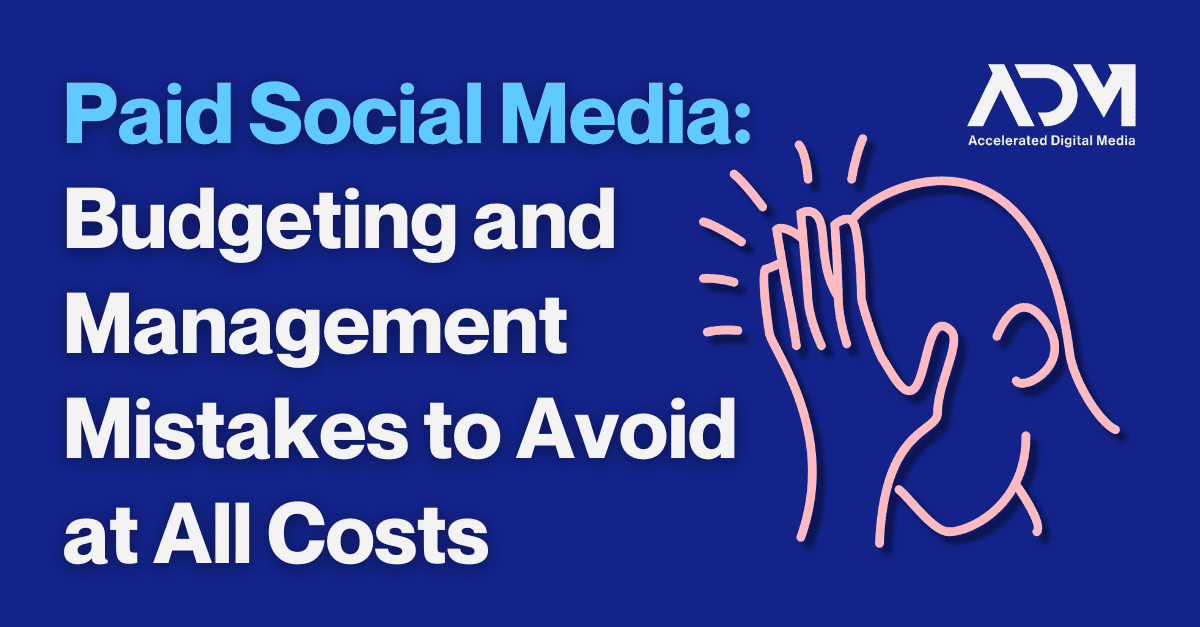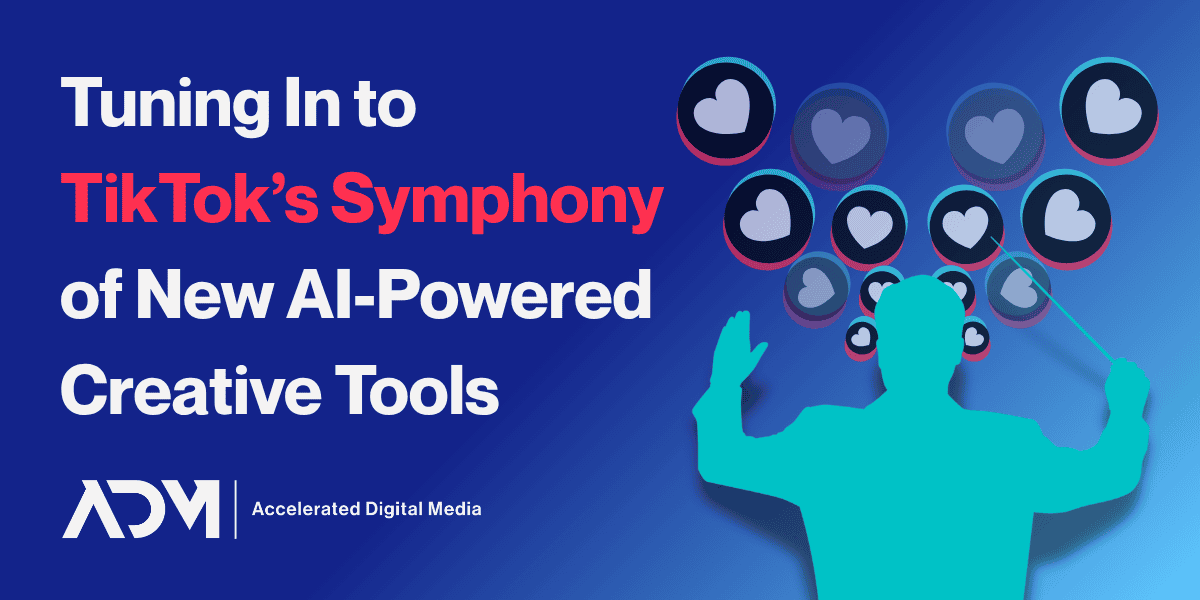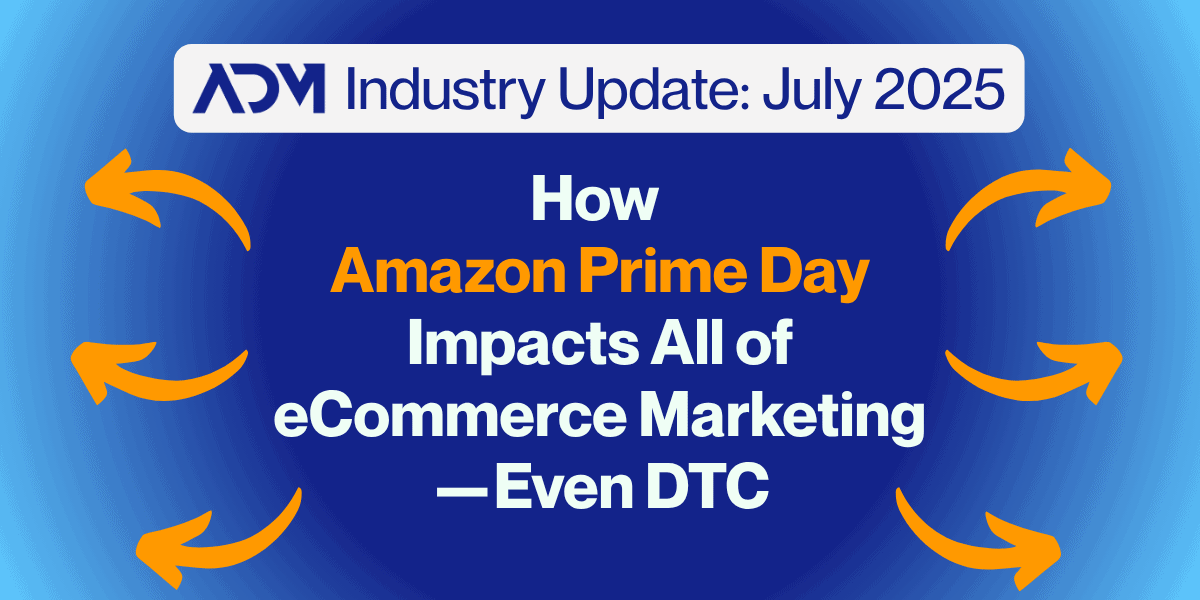We’ve written about the pitfalls that brands should avoid when designing and deploying their paid social media creative—but the budgeting and management side of paid social advertising can also be fraught with missteps. From unbalanced budgets to poor internal and external communication all the way down to missing account access, the ADM team has seen it all. In this blog, we’ll lay out some of the most glaring mistakes you’ll need to avoid if you want your paid social marketing to be successful.
Disorganized Account Setup
At ADM, nearly every social account we inherit will have different implementation issues.
Generally, they can be pixel or tracking issues, disorganized ad account issues, or access issues.
- Pixels might be set up but lacking key events or conversion tracking. Some accounts might not have conversion tracking set up properly which makes it difficult to accurately track and attribute conversions to the social ads.
- Disorganized ad accounts typically have overlapping audiences, redundant ad sets, and unclear naming conventions, which can lead to inefficient ad spend and difficulty in optimization.
- Sometimes, brands don’t even have the correct access to their social media business accounts, making it difficult to even get started launching campaigns.
Before you can develop a robust marketing program—or partner with an agency to help you do so—you need to be sure you at least have the keys to your accounts. For more information about getting your paid social accounts set up for success, check out our guidance on social media marketing for eCommerce.
Overspending on Top-of-Funnel Strategies
Managing ad campaign budgets effectively is a sophisticated process that demands a strategic, data-driven approach. It requires balancing spend across various channels like paid search, social, and programmatic, each with unique dynamics and potential for returns.
One common mistake is allocating too much budget to top-of-funnel (TOFU) awareness campaigns while neglecting mid-funnel (MOFU) or bottom-of-funnel (BOFU) conversion and retargeting campaigns. While social media can be great for raising awareness, it has much more potential as a sales driver—which many brands fail to capitalize on.
ADM recommends that most eCommerce brands spend no more than 30% of their budget on TOFU campaigns. Going beyond this can lead to a poor ROI because, while awareness is important, it doesn’t directly drive conversions. If you put too much of your budget into these campaigns, you might end up with a lot of people who know about your brand but not enough people who are actually taking action to purchase.
Overspending on Retargeting
On the other hand, it is also possible to overspend on retargeting campaigns. While retargeting is crucial for bringing back potential customers who have already shown interest, dedicating too much budget can result in prospects seeing your ads too often in too short of a period of time. ADM avoids over-saturating retargeting audiences by monitoring the frequency (number of times someone sees an ad in a given period of time) regularly.
When the same audience sees an ad too often in too short of a period of time, it often leads to a negative connotation with the brand—as marketers call it: ad fatigue. Over-saturating an audience wastes ad dollars and risks harming your brand’s perception. Additionally, overspending on retargeting can result in low incrementality—meaning you’re spending money to get conversions that might have happened anyway without the additional ad spend.
Spreading Your Budget Too Thin
One of the biggest mistakes we see is spreading the budget too thin across too many campaigns or ad sets. Segmentation is vital, but over-segmentation can lead to poor performance. ADM recommends that most eCommerce clients have:
- A standard sales campaign that includes both prospecting and retargeting audiences
- An Advantage+ campaign dedicated to promotions
- A separate Advantage+ campaign solely for catalog ads
- A creative testing campaign
Occasionally, there might be a need for 1-3 additional campaigns, but going beyond this can work against the Meta and ADM best practices of consolidation. Having too many campaigns or ad sets can prevent any single campaign or ad set from achieving scale and efficiently driving results. We recommend brands allocate around 10-15% of their overall budget to testing. Anything below this threshold makes it challenging to gather enough data to determine what works and what doesn’t.
Setting Unrealistic Goals and Timelines
It’s important to understand that great marketing, especially in digital channels, requires time, data, and iterations to find the sweet spot that drives consistent results. For an effective paid social strategy, you need to focus on building a foundation first—using data to test, learn, and adapt. Brands that understand this and allow themselves or their marketing partners the time to implement a strategic, data-driven approach tend to see the best results over the long term. Brands run into trouble when they start modifying campaigns preemptively based on unrealistic goals rather than allowing the campaigns time to calibrate and prove themselves out.
In addition to expecting too much too fast, expectations for each marketing initiative should align with that tactic’s capabilities. That includes things like expecting a high ROAS from an awareness tactic, or trying to build a remarketing campaign before you’ve adequately prospected to build a substantial audience. Each social media tactic has its role and purpose, and it’s vital to align with your marketing team to be sure that everyone understands what a positive outcome will look like and how long it should take to achieve.
Failure to Define Goals
When an eCommerce brand partners with a paid social marketing agency, it’s crucial to recognize that, while agency experts are quick learners and skilled at getting up to speed, there still needs to be clear and open communication from the start. Effective campaigns take time to optimize and that success builds through a cycle of learning, testing, and refining.
Sometimes, brands might assume the agency knows all the intricate details or background information that someone working internally for years would know. Or, they might expect the agency to have a silver-bullet strategy that will instantly improve their marketing performance, absent any customization or discussion of a brand’s unique business goals. ADM prides itself on diving in quickly and learning the ins and outs of a brand, but effective onboarding is a collaborative effort where both sides share insights and align on goals.
Inconsistent messaging or too much micromanagement can stifle your marketing teams’ ability to execute effectively. This often happens when there are too many decision-makers or differing opinions on the brand side, leading to disjointed campaigns and a lack of cohesive strategy. Internal stakeholders should be aligned on their goals and brand identity. When there’s a unified vision and trust in the marketing team to execute, campaigns are more consistent and have a stronger impact.
If you’re looking for a fresh, data-driven approach to your paid social media strategy, it might be time to speak with a new paid social agency. At ADM, we pride ourselves on our commitment to open agency-client relationships and innovative custom marketing strategies. We’ve seen—and rectified—every mistake in the book, and we’d be glad to talk to you about ways we could help improve your marketing program. Contact us below to set up a consultation or digital marketing audit:




